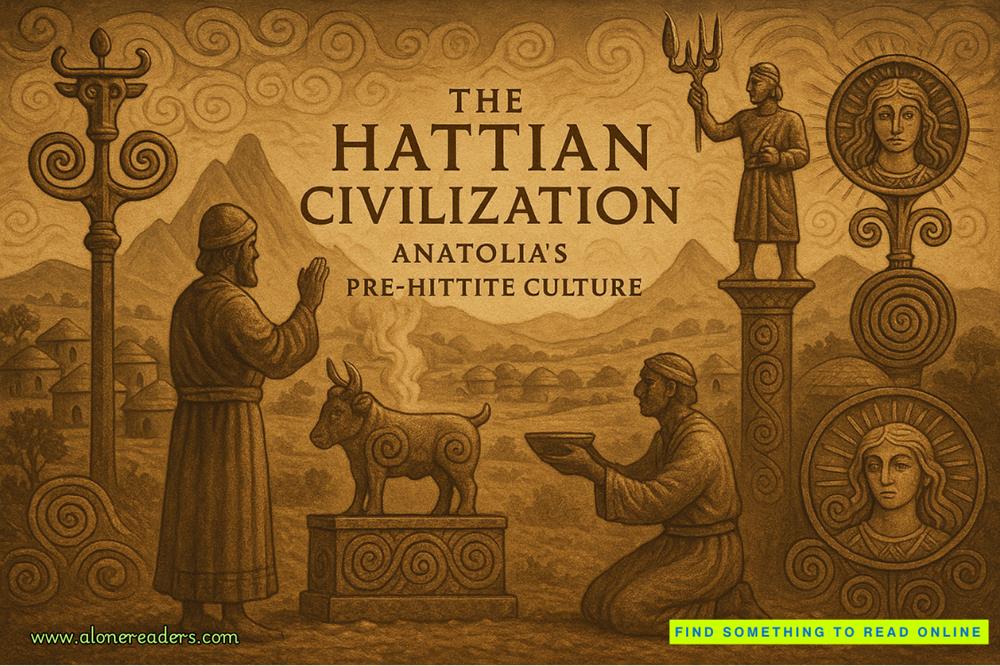“Damn,” I whispered. Her news wasn’t just “interesting,” it was also damning, or at least potentially incriminating, on many levels. Had official U.S. agencies been complicit in the global drug trade? Had Richard Janus been part of that complicity? And had this much-admired humanitarian actually been a drug smuggler—for years, or even decades?
If so, it could explain a lot—maybe even explain everything: The investigation by the FBI. The involvement of another federal agency—the DEA, or the CIA, or whoever the redheaded fat man worked for. A desperate midnight run for the border of Mexico. It could even explain controlled flight into terrain—suicide-by-mountainside—if the demons or humans hounding Janus were sufficiently savage, if dying seemed less hellish than living.
“Gotta go,” I said. “Thanks for the info. Very interesting, but damned discomforting.”
“How do you mean?”
“If Janus was a serious drug runner, that could change things—change the investigation—in all sorts of ways. Maybe he was assassinated—possibly by Guzmán, possibly by the government. Maybe he was set up. Maybe this whole thing is one huge hoax.”
“Maybe,” she said. “Or maybe it’s even more complicated than any of those. Be interesting to find out. Have a good night, Dr. B.”
“Yeah,” I said as I disconnected and headed out for an evening of fast food, forced camaraderie, and unshared secrets.
DESPITE MY NIGHT OF FRETTING ABOUT AIR AMERICA, the CIA, and the labyrinth of secrets that seemed to surround the life and death of Richard Janus, I resumed searching on day three with high hopes. Buoyed by the prior afternoon’s discovery of a tooth, I’d assumed the rest of the remains would emerge immediately.
I’d assumed wrong. After an hour of searching and sifting, we were still empty-handed. Had the force of the impact somehow caused one of the teeth to ricochet away from the others? Or had a single tooth been planted in the wreckage, as a red-herring hoax? If so, by whom, and for what purpose?
By late morning, we’d sent up four loads of debris without having found any more teeth or bones, and my mood had gone from buoyant to discouraged to downright mad. So when a tangle of metal tubing resisted my efforts to remove it from the wreckage, I gave a furious tug. Suddenly, unexpectedly, it came free and I toppled backward, my arms windmilling for balance. Catapulted by my flailing, a lumpy object—it looked like a charred chunk of driftwood pulled from a riverbank campfire—arched into the air, tumbling end over end. Blackened and broken though it was, I recognized it at once. I made a scrabbling lunge for it and managed to catch it just before it hit the rocks.
“Nice catch,” said Boatman, on all fours, one hand working a shard of riveted aluminum free from a crevice. “You been practicing with the UT football team?”
“No, but I feel like I just scored a touchdown,” I said. “Guys, this is the pelvis. Part of it, anyhow.” The FBI techs came closer, careful not to disturb anything in the vicinity where the pelvis had been. “That tangle of tubing must be the framework of the seat.” As I leaned down for a closer look, I felt my heart race even faster. “It is,” I said. “I see vertebrae in there, too!”
“Wow,” said Kimball, crouching alongside me. “Hard to tell where the seat leaves off and the skeleton begins.”
“The man and the machine are pretty thoroughly mashed together,” I said. “That whole aircraft—twelve thousand pounds—slamming into him like a pile driver, at four hundred miles an hour? I’m surprised it’s not even more fragmented than this.” I rotated the piece, studying what remained of the pelvis, then—on professorial autopilot—began pointing out structures. “This curved, triangular piece is the sacrum—the base of the spine, where it joins the pelvis. The sacrum is made of five vertebrae, and in children and adolescents, they’re separate. But here, you can see, they’re fused together. That tells us that this person was an adult; midthirties, at least.” I pointed to the narrowest tip of the triangle. “The coccyx—that’s the tailbone—attaches here, but it’s been snapped off.” I rotated the piece again. “Both pubic bones are broken, too. That makes it harder to tell the sex. So let’s look at the sciatic notch, which is this gap where the sciatic nerve runs from the spine down the leg.” I cradled the piece in one palm, so the V-shaped notch faced upward, and then pressed the side of my index finger down into the V. “I know you guys might not’ve noticed, but a woman’s hips are broader than a male’s, so the sciatic notch is wider, too. If it’s a female, you can fit two fingers into the sciatic notch.” I tried, and failed, to squeeze my middle finger alongside the index finger. “Here, I can’t—the notch is too narrow. So we know he’s a he.”
Boatman must have been reading my mind. “Any way to tell how old he is?”
I shook my head. “It’s too damaged. Normally, you can tell the age—the decade, anyhow—from the wear on the pubic symphysis.”
“The what?” asked Boatman.
“The pubic symphysis. That’s the joint where the left and right pubic bones meet, just above your crotch.”
Kimball chuckled. “Boatman’s would look like a kid’s, then,” he gibed. “No risk of wearing out his pubic bones.” Grinning at his joke, he began taking photos of the pelvis and the mangled framework of the pilot’s seat. Suddenly, as he hovered over the seat, he said, “Guys, look at this!” He lowered the camera, letting it hang from its strap, and bent down to extricate a charred object from the mangled metal. It was thin and small—half the size of a deck of cards—with rounded corners and a pair of thin wires, about a foot long, dangling from it.
He held it in his palm, turning it over to inspect it. “This is a circuit board. And a battery, looks like. Holy crap—I think this is some kind of detonator.” He looked up, eyes wide. “Don’t move.”
He didn’t have to tell us twice. A detonator implied a bomb—possibly a live bomb. I flashed back to the explosion that had nearly brought down our helicopter the day we’d arrived. Maddox had thought it was an oxygen cylinder bursting, but maybe he’d been wrong. Our eyes moved—scanning one another’s faces; scanning the rocks and the ragged debris—but our bodies remained as motionless as statues.
After a long, tense silence, Boatman finally spoke. “We can’t just stand here forever,” he pointed out. Then, without moving his feet, he leaned forward to study the object in Kimball’s hand. “So,” he said, “if it’s a detonator, why isn’t the pelvis blown to smithereens? And why isn’t the detonator blown to bits?” Slowly he shook his head. “I think it’s just a cell phone—or maybe an iPod—with what’s left of some earbuds.”
“No way,” Kimball insisted. “These wires aren’t long enough. Besides, they’re hardwired—soldered directly to the circuit board—not plugged into a jack. See?”
“Computer mouse, then,” replied Boatman. “The wires are the tail.”
Kimball shook his head doggedly. “Too short for that, too. And there’s no USB connector on the other end. Just these weird flat tabs of copper.”
“So the USB connector got sheared off,” said Boatman. “Or melted.” The pair of them made me think of an old, bickering married couple. He turned to look at me. “Doc? If you stare at that thing any harder, it might burst into flames. What are you thinking?”
I could feel gears turning in my mind—gears, or maybe combination-lock tumblers, their notches gradually aligning, one by one. “I think,” I said, as the last tumbler clicked home, unlocking an idea, “that it’s okay to move. I also think we’ll know in thirty minutes whether or not this is Richard Janus.”
KIMBALL AND I WENT TOPSIDE TO THE COMMAND center, taking the electronic gizmo and the camera with us. While Kimball transferred photographs from the camera to the computer, I showed the gizmo to McCready and Maddox and asked McCready to enlist some of Prescott’s field-office agents for a bit of quick research. A moment later he was on the phone, calling in the cavalry.
Meanwhile, I called my friend Helen Taylor in Knoxville, hoping I’d catch her still at work. The phone rang six times, and I feared she’d le
ft early, but finally she answered. “East Tennessee Cremation Services.”
“Oh, good,” I said, relieved. “Helen, it’s Bill Brockton. I was afraid you’d left for the day.”
“No, just processing a cremation. How are you, Dr. Brockton?”
“I’m fine, but I need a favor. Can I send you some pictures of something that’s burned to a crisp and get you to tell me what it is?” If anybody could confirm my hunch about the incinerated object, I suspected Helen was the one.
“I will if I can,” she said. “Do you have our mailing address?”
“I’m in a hurry, Helen. Can I fax you the pictures?”
“Well, yes.” She sounded doubtful. “But they’d come through clearer if you e-mailed them—as scans, or image files, attached to a message. Can you do that?”
I turned to Kimball. “Can we send e-mail? With picture files as attachments?”
“With this computer, and the satellite data link we’ve got?” Kimball grinned. “We could just about send you as an attachment.”
“Yes, we can e-mail them,” I told Helen. “What’s the address?” I jotted it on a notepad beside the computer. “Check your in-box in about thirty seconds. The message will come from”—I looked at Kimball as I spoke—“an FBI address?” He nodded, so I confirmed it. “Yeah, from an FBI address.”















